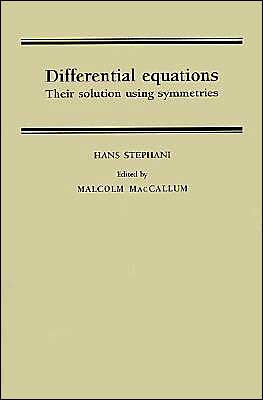Differential Equations: Their Solution Using Symmetries
In many branches of physics, mathematics, and engineering, solving a problem means solving a set of ordinary or partial differential equations. Nearly all methods of constructing closed form solutions rely on symmetries. The emphasis in this text is on how to find and use the symmetries; this is supported by many examples and more than 100 exercises. This book will form an introduction accessible to beginning graduate students in physics, applied mathematics, and engineering. Advanced graduate students and researchers in these disciplines will find the book a valuable reference.
1100955465
Differential Equations: Their Solution Using Symmetries
In many branches of physics, mathematics, and engineering, solving a problem means solving a set of ordinary or partial differential equations. Nearly all methods of constructing closed form solutions rely on symmetries. The emphasis in this text is on how to find and use the symmetries; this is supported by many examples and more than 100 exercises. This book will form an introduction accessible to beginning graduate students in physics, applied mathematics, and engineering. Advanced graduate students and researchers in these disciplines will find the book a valuable reference.
63.0
In Stock
5
1

Differential Equations: Their Solution Using Symmetries
276
Differential Equations: Their Solution Using Symmetries
276Paperback(New Edition)
$63.00
63.0
In Stock

Product Details
| ISBN-13: | 9780521366892 |
|---|---|
| Publisher: | Cambridge University Press |
| Publication date: | 01/26/1990 |
| Edition description: | New Edition |
| Pages: | 276 |
| Product dimensions: | 5.98(w) x 9.02(h) x 0.63(d) |
From the B&N Reads Blog
